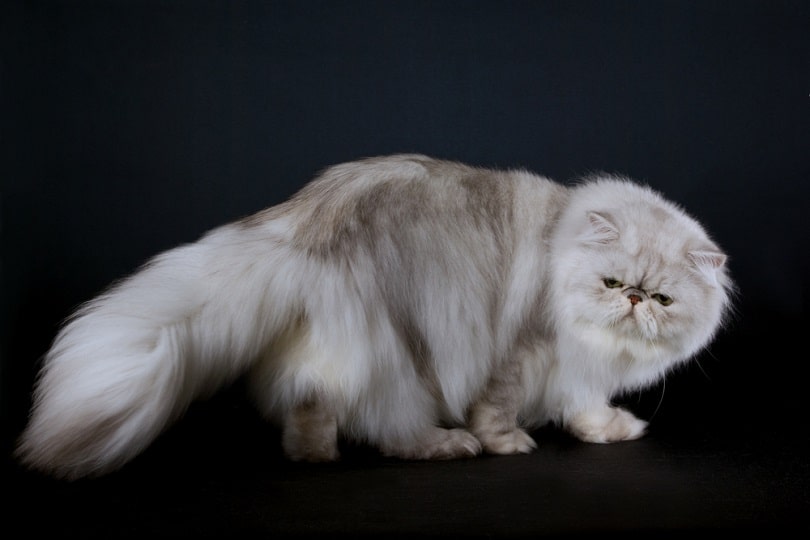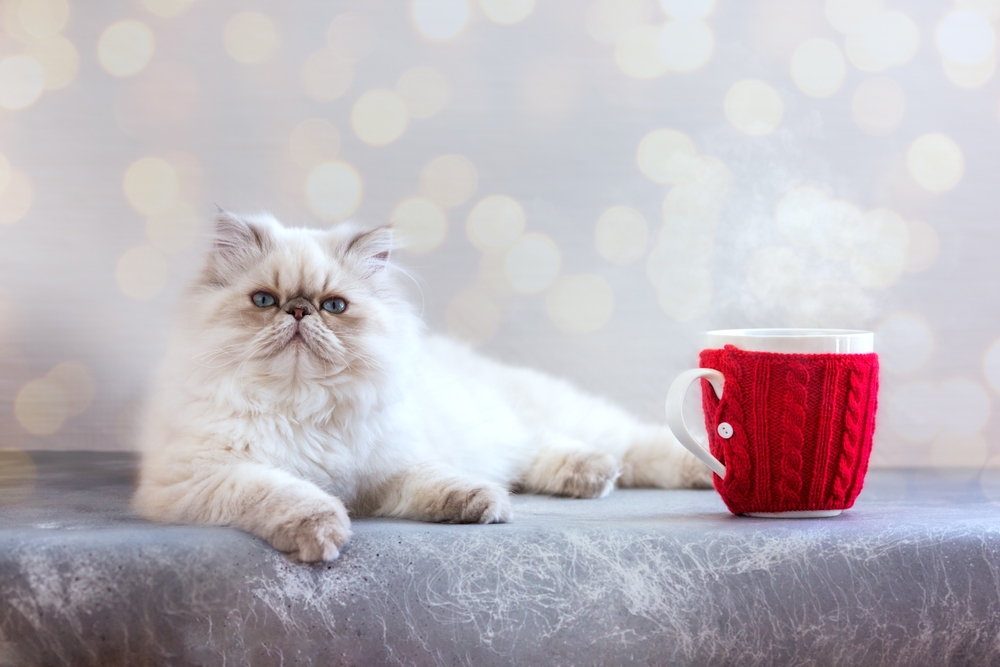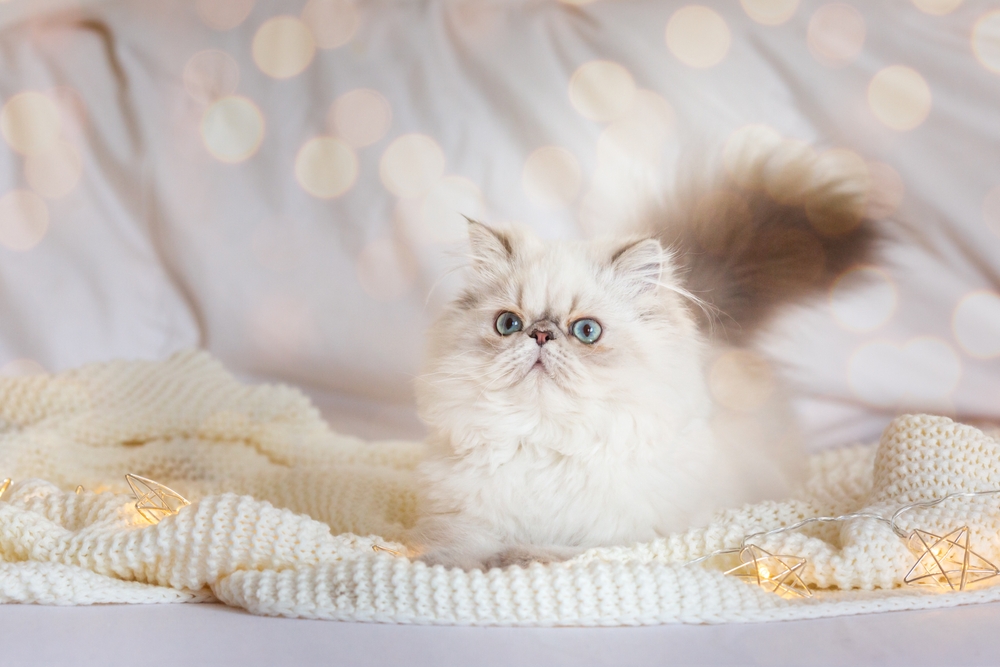As lovely as they are to love, the gorgeous Persian cat becomes even more so when covered in a luxurious silver coat. Silver Persians have been delighting pet lovers for more than a century, giving enthusiastic owners one of the most attractive cats and breeding experts an undeniable attractive variety to gain more interest in the breed.
From their shiny coats to their adoring personalities, Silver Persians are stunning inside and out. Let’s take a look at the characteristics and lifestyle of the Silver Persian cat and discover why many breed experts enthusiastically agree that it is the “Cadillac of cats.”
Race Overview
Colors:
Chinchilla silver, shaded silver, blue Chinchilla silver, blue shaded silver
Suitable for:
Families with children, owners who like to relax with their cats, owners who don’t care about grooming requests.
attitude:
Playful, loving, relaxed, quiet, smart, friendly
The Silver Persian cat is a different color of the Persian breed. The long-haired cat has a shining silver appearance, considered by many to be the most dazzling and noble of all Persian coats. There are two types, Chinchilla Silvers and Shaded Silvers, with similar origins and general characteristics.
Silver Persians achieve their classic beauty through stunning points of contrast. Round eyes stand out in striking shades of green and blue-green, while a brick-red nose sits below. Black outlines emphasize them and the lips, making the captivating eyes stand out even more and clearly defining every subtle change in facial expression.

Characteristics of the Silver Persian Breed
The Earliest Records of Silver Persians in History
While the Persian breed dates back to the 1600s, silver-coated cats did not gain significant recognition until the 1800s. Chinchilla Silver Persian cats began with Chinnie, a female born in England in 1882. Chinnie’s unusual coloring caught her owner’s interest, and she soon mated with another Silver with tabby markings named Fluffy I.
Sadly, Fluffy I and many of Chinnie’s offspring meet prematurely due to various accidents, leaving only his first female, Beauty. Beauty will have many litters. In 1890, his second mating produced Silver Lambkin, a legendary champion and the first of the Chinchilla Silvers.
Silver Lambkin gave birth to many cats that would significantly affect the development of the breed, and many modern silver cats can trace their lineages to him and his relatives.

How Silver Persian Cats Gained Popularity
Silver Lambkin and his descendants, especially Lord Argent and Champion Lord Southampton, were highly influential, appearing in the pedigrees of many modern Silvers. At this time, crossings with blues, Silver Tabbies, and other varieties found their way into the silver lines.
Spreading Silver Lambkin’s influence, most of Lord Southampton’s descendants moved across the ocean to form silver lines in the US at the turn of the century. Lord Argent also came to America in 1901 with his owner and founder of the Silver Society, Mrs. Florence Champion, to establish the Argent line. The Silver Persian quickly rose to fame, so Silver Lambkin’s death in 1906 was significant news on both sides of the pond.
Formal Identification of Silver Persian Cats
Following Chinnie’s birth in 1882, interest in Silver Persians grew, and the branch received its first standalone class at the Crystal Palace Show in 1894. Although detailed records are few, many believe that Silvers gained in recognition of the founding of the Cat Fanciers’ Association in 1906.
Over the years, confusion and disagreement over definitions has caused Silvers to move in and out of classes of different color type combinations. Silver Tabby, Smoke, Cameo, Tortoiseshell, and other Persians mingled in shared divisions as judges struggled to consistently and logically define the differences.
The Smokes and Cameos were in the Shaded Division with the Silvers until 1965 when the Smokes got their own separate division. In 1977, Golden Persian cats (a recessive variation of silver that produces golden tipping) gained CFA recognition and joined the Shaded Division. Finally, the Silvers and Goldens broke away from the others in the mid-1990s, giving us the categories of today.



Top 2 Unique Facts About Silver Persian Cats
1. Silver Persian Cats are Tricky to Identify
Although Silver Persian cats lie on a silver color spectrum, they fall into one of two color types:
- Chinchilla Silver: Chinchillas have a white undercoat and topcoat that features subtle black tipping on the back, flanks, head, and tail for a light silver-white appearance.
- Tinted Silver: The guard hairs have more shading at the ends, clearly separating the colored sections from the white areas on the ruff, face, and interior of the body and making the cat darker than the Chinchilla
The distinction between different colors and classifications has been debated since the earliest Silver Persians. Many people, including judges, cannot decide where a Chinchilla ends and a Shaded begins. The confusion continues today, as some Silver Persians get an “neither/neither” designation, meaning they don’t clearly fit either mold. Although they are difficult to interpret, purists say that the cats should be recognized as a Chinchilla or Shaded from a distance.
2. Silver Persians look very different as Kittens
A newborn Silver Persian kitten can catch a first-time owner off guard. While most people know that eyes take weeks to regain their natural color, the coat pattern can leave many scratching their heads.
The darker coat and markings are the first features you may notice in a Silver Persian kitten. If your cat is a Chinchilla Silver, they are often born with a Mackerel Tabby pattern featuring thin stripes and spots.
Shaded Silvers usually have the spotted pattern of the Classic Tabby. Although the patterns are well defined in kittens, the coat lightens, and the markings disappear after about 10 weeks as the hair grows back.



Does the Silver Persian Cat Make a Good Pet?
Persians have some of the most pleasant personalities of any breed, and the silver-coated variety is no exception. Although sometimes aloof from strangers, they are easy to get along with and rarely become too loud or aggressive.
Silvers have a reputation for being more intelligent and active than other Persians, but they are still more relaxed than the average cat. In most cases, they are happier being with their favorite person. Many owners even consider them to be like little dogs that tend to shadow their owners.
Maintenance is usually the most demanding part of owning a Silver. The Persian is a high-maintenance shedder that requires daily grooming. Getting them comfortable with the task at a young age is important. Despite the added challenges, caring for a Chinchilla Persian is also more rewarding, as the well-groomed coat creates a gorgeous cloud of silver-tipped fine hair.

Conclusion
Regal, exquisite, ethereal. You can choose any of the most common descriptors, and they all point to the Silver Persian being almost too good to be true. For over a century, Chinchilla and Shaded Silvers have brought their unique appeal to the cat fancy, garnering much debate over the years and much appreciation from avid fans around the world. With a radiant beauty and a charming personality to match, Silver Persians make a delightful addition to almost any household.
Featured Image Credit: Linn Currie, Shutterstock


